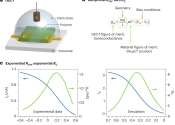A strategy to remotely modulate the doping of 2D transistors
When fabricating electronic devices based on conventional semiconducting materials, engineers need to complete a crucial step known as doping. Doping essentially entails the introduction of impurities into semiconductors ...









